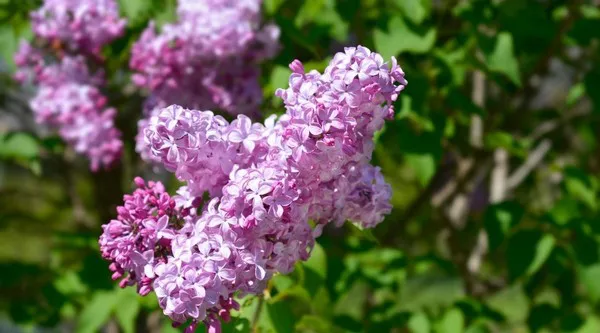Hyacinth flowers are beloved for their vibrant colors, captivating fragrance, and elegant blooms. While these springtime beauties bring joy to gardens and indoor arrangements, their fleeting nature can leave us longing for their presence year-round. Drying hyacinth flowers is an excellent way to preserve their charm and enjoy their beauty beyond their blooming season. In this article, we delve into the art of drying hyacinth flowers, exploring various methods, essential tips, and creative uses for these dried floral treasures.
Understanding Hyacinth Flowers
1. Characteristics: Hyacinth flowers (Hyacinthus orientalis) belong to the Asparagaceae family and are known for their dense spikes of fragrant, bell-shaped blooms. They come in an array of colors, including purple, pink, white, blue, and yellow.
2. Blooming Season: Hyacinths typically bloom in spring, gracing gardens and homes with their striking beauty and intoxicating fragrance.
3. Popular Varieties: Some popular hyacinth varieties include ‘Blue Jacket,’ ‘Pink Pearl,’ ‘White Pearl,’ ‘Carnegie,’ and ‘Woodstock.’
When to Harvest Hyacinth Flowers for Drying
1. Timing: The best time to harvest hyacinth flowers for drying is when they are fully mature but have not begun to wilt or fade. Choose flowers that are at their peak, displaying vibrant colors and a strong fragrance.
2. Late Morning or Early Evening: Harvest hyacinths in the late morning or early evening when the dew has dried, but the flowers are not exposed to the intense midday sun.
Methods for Drying Hyacinth Flowers
1. Air Drying
Air drying is a simple and effective method for preserving hyacinth flowers. Here’s how to do it:
Cut the Stems: Using sharp, clean scissors or pruning shears, cut the hyacinth stems at the desired length. Choose stems with healthy, unblemished flowers.
Bundling: Gather 5 to 10 stems together and secure them with a rubber band or string. Ensure that the flowers are not overcrowded to allow for proper airflow.
Hanging: Hang the bundled stems upside down in a dry, well-ventilated location away from direct sunlight. Attics, sheds, or a cool, dark room work well for this purpose.
Drying Time: The drying process may take a few weeks, depending on the humidity and air circulation in the drying area. The flowers are ready when they feel dry and papery to the touch.
2. Silica Gel
Silica gel is a desiccant that absorbs moisture from flowers, making it an excellent option for preserving the shape and color of hyacinth blooms.
Prepare the Container: Choose a container with an airtight lid. Spread a layer of silica gel at the bottom of the container.
Position the Flowers: Cut the hyacinth stems to the desired length and gently place them on the silica gel. Be sure to position the flowers carefully to preserve their shape.
Cover with Silica Gel: Pour more silica gel over the flowers, ensuring they are completely covered. Seal the container with the airtight lid.
Drying Time: The drying process typically takes 3 to 7 days, depending on the thickness of the flowers and the humidity levels.
3. Microwave Drying
Microwave drying is a quick method for preserving hyacinth flowers, but it requires caution to prevent overheating or damaging the blooms.
Preparation: Remove any excess moisture from the flowers by gently patting them with a paper towel. Place a microwave-safe plate or paper towel in the microwave.
Microwaving: Lay the hyacinth flowers on the plate or paper towel and microwave them at a low setting in short intervals (10 to 20 seconds). Check the flowers after each interval to avoid overheating.
Cooling: Allow the flowers to cool between intervals to prevent overheating or scorching.
Drying Time: The drying time will vary depending on the microwave’s power and the thickness of the flowers.
Creative Uses for Dried Hyacinth Flowers
1. Floral Arrangements: Dried hyacinth flowers add a touch of elegance and nostalgia to floral arrangements. Combine them with other dried flowers, grasses, and foliage for stunning displays.
2. Potpourri: Create homemade potpourri by mixing dried hyacinth flowers with fragrant herbs and spices like lavender, rose petals, and cinnamon.
3. Crafts: Use dried hyacinth flowers in various craft projects, such as making pressed flower art, greeting cards, or decorative candles.
4. Home Décor: Incorporate dried hyacinth flowers into wreaths, wall hangings, or centerpiece arrangements for a charming and natural touch.
Caring for Dried Hyacinth Flowers
1. Storage: Store dried hyacinth flowers in a dry, cool, and dark place to prevent them from absorbing moisture or fading due to sunlight.
2. Handling: Handle dried hyacinth flowers gently to avoid crushing or damaging the delicate blooms.
Conclusion
Drying hyacinth flowers is a delightful way to preserve their beauty and fragrance long after their springtime bloom has passed. Whether air drying, using silica gel, or microwave drying, each method offers a unique approach to preserving these captivating blooms. The dried hyacinth flowers can be creatively incorporated into various projects, from floral arrangements and potpourri to crafts and home décor, adding a touch of nature’s elegance to your surroundings. By embracing the art of drying hyacinth flowers, you can enjoy the enduring charm of these beloved blooms throughout the year.


